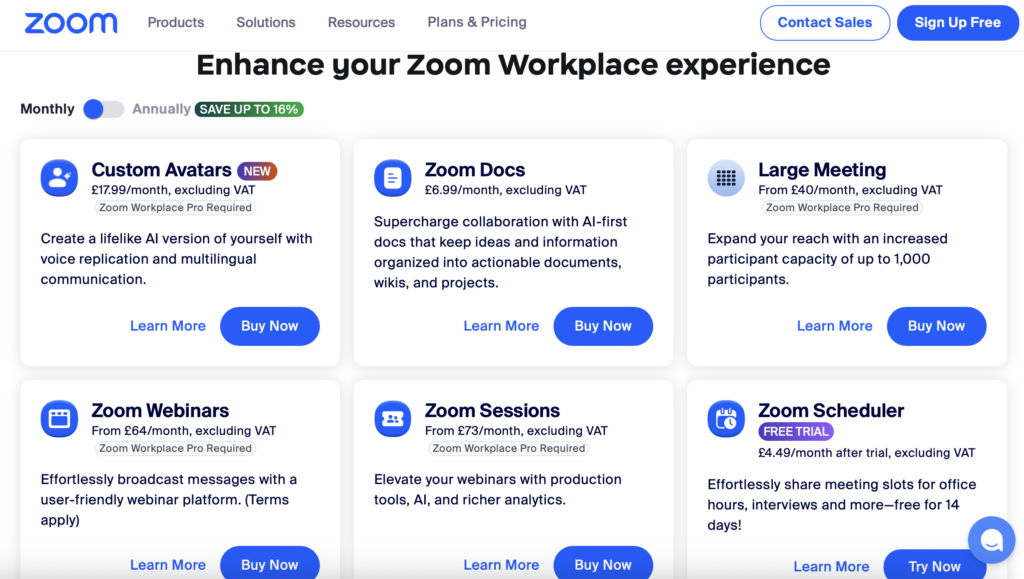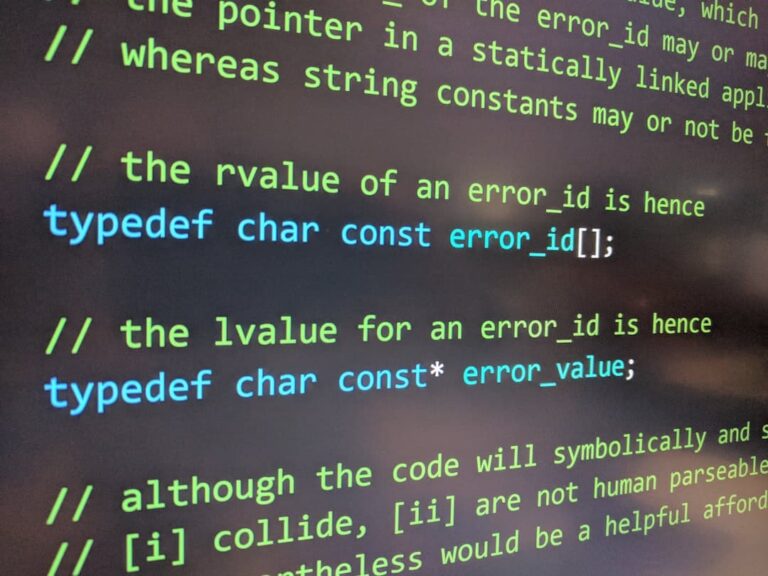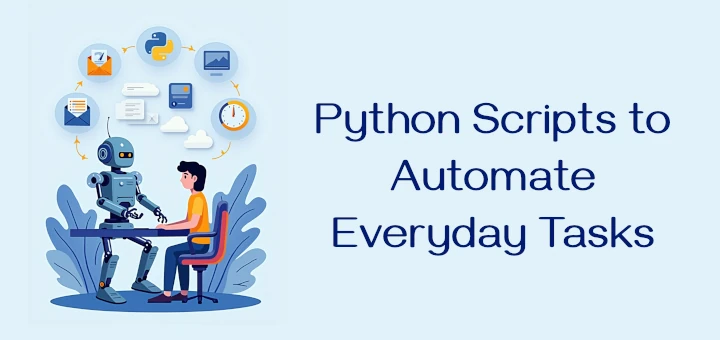Jun 30, 2025
13min Read

Software as a service (SaaS) is a software delivery method in which a provider hosts the application and makes it available to end users via the internet. This approach to software distribution can also support a number of different pricing models and strategies.
A pricing model is a standardized method used to determine the amount your customers will pay to access your software, such as subscription-based or freemium pricing. These pricing models can help you to implement a wider pricing strategy, like penetration or premium pricing.
In this article, we’ll explore the different pricing models and strategies available, as well as the best tools you can use to set the right price and create a profitable SaaS product.
What is a software pricing model?
A software pricing model is a structured method for determining how much a customer should pay to access software. Examples of software pricing models include subscription-based pricing, where you charge a recurring fee; per-user pricing, where you charge for each unique user; and freemium pricing, where you offer limited features for free.
SaaS pricing vs. traditional pricing
SaaS pricing models provide a low barrier of entry by keeping the end user’s up-front costs to a minimum. Users then pay ongoing fees, like a subscription or usage fee, to retain access. With traditional pricing, up-front costs are high, but users have continuous access to the software without paying recurring fees.
How to price a SaaS product
Deciding on a price for your SaaS product is a process with several stages. It’s important to take a number of factors into account before settling on a pricing strategy, as you’ll need to make sure you’re covering your own costs while meeting customer expectations.

1. Carry out market research
A good first step is to carry out market research with a focus on your target audience. Try to identify their price expectations: what they’re able to afford, and what they’re used to paying for similar software. You can also use this research to determine whether there’s potential for a tiered pricing strategy with advanced features being reserved for customers who pay more.
2. Explore competitor pricing
It’s essential to look at your rivals to ensure your software is priced competitively. This doesn’t necessarily mean you need to adopt similar or lower prices, but it does allow you to get a sense of how to value your software.
If you offer features your competitors don’t, you can charge more. If your software is more streamlined, you may want to charge less to attract customers who are looking for a bargain.
3. Evaluate your software costs
Your prices will need to cover your costs so you have a profitable product. Make sure you understand the costs associated with software design, creation, distribution, and marketing. With an SaaS product, it’s also important to consider ongoing expenses, such as the cost of hosting the software, labor costs, and costs associated with delivering software updates.
4. Consider your business goals
You need to be clear about what you want your SaaS product to do for your business. Are you trying to grow your market share? This could favor a lower price point. Are you trying to increase your profit margins? This could make it more important to charge a price with a significant markup.
If you have related products or services you want to sell, it can sometimes be strategically advantageous to position your software as a loss leader to get customers into your ecosystem. Think about the ‘big picture’ and what you’re trying to achieve.
5. Analyze existing data
It’s also a good idea to analyze any existing data you may have that’s relevant to pricing. For example, if you’ve already released other products, look closely at sales and revenue data from when these were available at different price points to see what worked best for you.
Popular SaaS pricing models
There are a number of popular software pricing models that are commonly used for SaaS products, and some of these will even use a combination of pricing models, targeting different types of users.
In general, SaaS products use a license-based approach, where instead of buying the software and receiving continuous access, like with traditional software or video games, the end user is instead paying for a license to access the software. Depending on the approach, this license could provide permission for a certain number of users to access the software, or for access to be granted on a set number of devices.
The examples of pricing models below are all useful depending on your individual circumstances, the types of customers you’re looking to attract, and your business objectives.
Subscription-based pricing
With subscription-based pricing, you charge customers a recurring fee to access your software. This subscription fee may be paid weekly, monthly or annually and it’s common to provide a small discount for longer subscriptions, in order to entice long-term commitment.
Subscription-based pricing can be further broken down into specific models, like fixed-price, tiered and per-user pricing. These different subscription-based approaches will all be covered later in this section.
Subscriptions can also vary by region and may include optional extras, which can increase the price.
The main benefit of subscription-based pricing is its predictability. You get a better sense of the amount of money you’re going to make from month to month, while customers know the amount they have agreed to pay to access your software and how long they have signed up for.
Best for: Situations where you want a predictable income and have a product that people are likely to use repeatedly, on a long-term basis.
Fixed-price model
A fixed-price model is an example of subscription-based pricing, where the subscription fee is a fixed amount for an agreed duration, regardless of the number of users or intended levels of usage.
It’s distinct from traditional software pricing, because the buyer still pays continuous subscription fees for access, such as monthly or annual fees, rather than making a one-time payment. However, the price doesn’t change if new users are added and all features are included within the subscription fee.
This provides excellent clarity for buyers and allows you to promote the value you’re providing with your software. It also avoids the risk of users running into what they perceive to be hidden or unexpected costs, especially when using the software in business settings.
One possible downside is the limit it puts on revenue generation potential from large user groups. For example, a business of 1,000 people will pay the same as a business with 10 people.
Best for: Software targeting fast-growing businesses that may be reluctant to pay user-based fees, or situations where you’re trying to emphasise the value or all-inclusive nature of your product.
Fixed-price model example: Basecamp offers a Pro Unlimited plan, which is a fixed price option with no per-user charges and no restrictions on projects.
Tiered pricing
Tiered pricing follows the same principles as subscription-based pricing, in that you charge customers a recurring fee to access your software. However, with tiered pricing, there are different levels of service available. An example may be offering standard, business, and premium tiers.
This approach provides customers with a level of flexibility in terms of choosing what they’re paying for. It also provides upselling potential – you can encourage users on a lower tier to upgrade to a higher tier as their needs evolve.
This element of scalability works in reverse too. If a user no longer needs the top-tier service, you may be able to encourage them to continue to subscribe at a lower tier rather than dropping the service entirely.
Best for: Software that can be scaled up and down in terms of the features or resources on offer.
Tiered pricing examples: Hostinger’s managed WordPress hosting service offers different tiers, based on the number of websites and the amount of server resources users need. And Netflix offers tiered pricing, including a standard tier, a cheaper ad-supported tier, and a premium tier, which offers 4K picture quality.

Freemium pricing
The idea behind a freemium pricing model is to offer basic features of your software for free and to charge for access to the premium features. This approach can work like a trial period, allowing users to get a sense of how your software works before they commit to a payment.
For customers, freemium pricing can provide a sense of the user interface and other key aspects of the software without an initial commitment. Once they are confident your software is high-quality and offers what they need, they can upgrade to use the premium features.
You can also potentially monetize the free version by including ads within your software.
There is a balancing act here, however, as you need to offer enough free features for the software to provide a positive first impression, but you need to hold enough features back to provide a clear incentive for customers to pay for the full version.
Best for: Well-designed software solutions that may be used differently by casual users than by professional users. Startups without a clear track record can also use freemium pricing to make a positive first impression and build a reputation.
Freemium pricing examples: HubSpot uses a freemium model, appealing to those with simpler needs and offering more features for businesses with advanced marketing needs. The language app Duolingo also offers a free, ad-supported version, while charging for a version with no ads and a wider range of features, including AI feedback.
Usage-based pricing
A usage-based approach to pricing, sometimes referred to as a pay-as-you-go model, charges end users based on how much they actually use your software.
With this model, there’s a direct link between the customer’s needs and the amount they pay. This can help to create a sense of fairness, and it can appeal to customers who want to avoid being tied into long-term contracts.
A downside with this model is that your income may vary greatly, as customers’ usage patterns may differ substantially during holidays or economic downturns.
Best for: Customer service chatbots, advanced cloud services and other SaaS offerings with the potential for vastly different levels of usage, ranging from casual to high-end professional use.
Usage-based pricing examples: Amazon Web Services (AWS) uses a pay-as-you-go or usage-based model, with prices scaling depending on business needs. Hostinger Horizons – a no-code app builder – uses a combination of tiered and usage-based pricing.
Per-user pricing
With per-user pricing you charge customers for each user that needs access to the software. It means you’ll make more money from a business with 200 users than you do from a business with 20 users.
A per-user software pricing model makes sense when businesses are able to extract value from your software that’s proportional to the amount of users accessing your product. It also helps you to cover the costs of hosting the software and dealing with the scale of usage.
This approach is most common with B2B tools like project management and customer relationship management software. However, from a customer perspective, it is possible that you’ll be paying the same amount for users who rarely use the software as you will for avid users.
An alternative to this model is per-active user pricing, where you charge based on the number of active users at any point. This can help to remove the sense of unfairness when paying for infrequent software users.
Best for: Software aimed at large businesses, where a significant number of users will need access and where the software becomes more valuable to the business as they add users.
Per-user pricing example: The graphics suite Canva offers a Canva Teams pricing option, where businesses pay based on the number of employees who will use the software.
Per-feature pricing
With per-feature pricing, you charge your customers based on the features they use. This can provide a level of personalization. It can also make it more cost-effective for end users or businesses that only use a small number of your software features. You can also generate more revenue from users who take advantage of the full range of features on offer.
Per-feature pricing provides scope for upselling and also gives users control over what they use and pay. For example, a business can save money by disabling features that aren’t being used, or they can pay slightly more to add one or two useful features.
However, this can potentially overcomplicate the buying experience, and there’s potential for the total cost to become very high unless the cost of new features is carefully announced.
Best for: Software with significant upselling potential, where individual features may add significant value for some users, but not for others.
Per-feature pricing example: The videoconferencing software Zoom includes a number of optional per-feature pricing options. Users can pay to add large meeting support, custom avatars, cloud storage, and enhanced digital whiteboard features.

Dynamic pricing
Dynamic pricing involves charging different rates at different times, depending mainly on the level of demand.
However, dynamic pricing often goes further than focusing on demand alone, factoring in competition and wider market patterns. You might charge less at strategic moments in an effort to capture market share from rival software companies.
Dynamic pricing often makes use of complex algorithms, and price adjustments can even be automated using artificial intelligence. This does create the potential for confusion about pricing, and you could hypothetically be dragged into a pricing battle with rivals.
Best for: Software that experiences high levels of demand at specific times of the year.
Dynamic pricing example: HubSpot’s Enterprise offering asks users to “talk to sales” when purchasing the product, giving the sales team the ability to adjust the quoted price at the time of purchase based on demand and other factors.
Each of the pricing models outlined above has a place, but there are a number of factors you’ll need to evaluate before you can adopt the right model.
What is the best B2B SaaS pricing model?
The ideal B2B SaaS pricing model depends on the businesses you’re targeting and the product you’re offering. If your software grows in value as a business adds more users, it makes sense to opt for a user-based model to maximize revenue. If your SaaS product holds different value for different types of businesses, a tiered approach may make sense.
In addition to considering your own costs and the type of software you’re offering, you’ll need to decide on an overriding pricing strategy.

What are the four types of pricing strategies?
Software pricing strategies can be broadly separated into four main types. Each of these strategies has its pros and cons, so you need to choose wisely, factoring in your current market share, the level of competition, and the financial results you want to achieve.
1. Premium pricing
The idea behind premium pricing is to intentionally set the price of your software higher than competitors on the market in order to create a sense of prestige and project a sense of quality. The idea is to target users who are willing to pay extra to obtain a superior product, or a product that offers a sense of status.
2. Penetration pricing
A penetration pricing strategy involves introducing your software at a low price in order to quickly gain market share. After establishing your product on the market and hopefully taking customers away from rivals, you then increase the price to enhance your revenue-earning potential. This pricing strategy is ideal for new software, as it allows you to generate sales quickly.
3. Price skimming
With a price-skimming strategy, you introduce your product at a high price and gradually lower the price over time. The idea is to extract maximum revenue from each demographic, beginning with the people who are willing to pay the highest amount. However, this strategy works best when you have an established presence in the market already, or a product that clearly stands out.
4. Loss leader
A loss-leader pricing strategy involves intentionally pricing your software below the costs associated with producing it, incurring losses. However, from there, you can gain customers and persuade them to purchase your other products, which are priced to make a profit. This works best when you have multiple related products on the market at the same time.
There are a variety of tools available that can help you to understand your place in the market and to assess the current performance of your pricing strategy. By using these tools effectively, you can track competitors’ pricing, analyze how changes to your pricing strategy impact financial outcomes, and automate important decisions using custom rules and real-time data.
How to choose the right software pricing strategy
To settle on the right software pricing strategy, you’ll need to consider:
- The costs associated with producing and distributing your software
- The features of your software
- The value it offers to customers
- The audience you are targeting and how much they’re willing to spend
- Your current market share and existing customer base
- Your ongoing SaaS marketing costs
- Your competitors’ pricing strategy
- Whether you want to offer a premium or budget product
Understanding all of these factors will help you to determine the ideal pricing strategy.
To price your software, you’ll need to factor in its value and cover your own costs, while considering what your competitors are doing. Fortunately, there are a variety of software pricing tools that can help.
Best pricing analysis tools
Pricing analysis tools allow you to get a better sense of market conditions, trends, and the prices your competitors are charging. By understanding the wider market, you can position your product sensibly and create a more compelling software pricing strategy.
1. Price2Spy
Price2Spy is a suite for competitor price monitoring aimed at businesses in different sectors. One of its key features is the ability to track and monitor prices even when websites try to hide them behind paywalls, member areas, or in images rather than text.
Features:
- AI-assisted price detection tools to identify hidden prices
- Support for price tracking in multiple currencies
- A pricing dashboard for a quick overview of competitors’ prices
- Competitor price change alerts
Pricing:
Pricing starts from $78.95 per month, with different price tiers available and options to add new modules on a per-feature basis. A 14-day free trial is also on offer.
2. PROS
PROS is an AI-driven software solution, offering real-time analytics features and providing actionable insights drawn from market trends. It includes a large number of automation features, which can help you reduce employee workloads and labor costs.
Features:
- Predictive AI for understanding different pricing outcomes
- AI-driven pricing optimization for automated adjustments
- Integration with CRM and CPQ software for data centralization
Pricing:
PROS has a dynamic pricing strategy – you’ll need to discuss your specific needs with a sales agent. You are able to request a personalized demonstration of the software before you commit.
Best pricing optimization software
Price optimization software is designed to help you fine-tune your pricing to generate the best financial results. It will often include predictive pricing features, so you can get a better sense of what will happen if you adopt different pricing models and approaches.
1. Competera
Competera is an AI-powered price optimization tool, which includes automation features. It helps to facilitate market-based pricing, with options to assist with dynamic strategies.
Features:
- Real-time tracking of competitor prices
- AI tools for optimizing prices based on demand patterns
- Price synchronization across distribution channels
- Support for multiple currencies
- Reporting and analytics features to visualize results
Pricing:
Competera has a dynamic pricing strategy, so there’s no set price. You can call the company directly and discuss your circumstances to receive a quote. There’s no free trial.
2. PriceShape
PriceShape is a Danish software solution, which is primarily focused on tracking competitor prices. You pay based on the number of products you want to track. However, it also includes tools for monitoring your own products’ performance and optimizing your own pricing.
Features:
- Competitor price monitoring with a user-friendly dashboard
- Automated price adjustments, based on demand patterns
- Product performance tracking
- Real-time alerts for price changes
- Price synchronization across distribution channels
Pricing:
Starting from €299.00 per month, depending on the number of competing products you want to track. A free trial is available, so you can try before you commit.
Best pricing software for small businesses
Small businesses face unique challenges when it comes to software pricing. They’re less able to afford premium pricing tools, and they have to be more aware of competitors’ pricing because they have lower brand recognition.
1. Prisync
Prisync is a comprehensive price tracking and monitoring tool, which makes it easier to understand wider market conditions. It also includes daily reporting and email notifications for price changes. The low entry price makes it suitable for small businesses.
Features:
- URL-based and channel-based competitor price tracking
- Email notifications for price changes
- Support for global currencies
- Price positioning comparisons
- Competitor price histories
Pricing:
Prices start from $99 per month, with more expensive premium and platinum tiers. A free 14-day trial is available, so you can try out the price tracking and monitoring tools before buying.
2. Pricefy
Pricefy is a price analysis and optimization tool, which is affordable for even very small businesses. It includes automated dynamic pricing features and options for monitoring competitors’ prices.
Features:
- AI-driven automatching to easily find rival products
- Competitor price change alerts
- Charts to visualize current performance and your position in the market
- Dynamic pricing to automatically adjust prices based on your rules
Pricing:
Pricefy is a freemium product, meaning you can try out the basic features for free, monitoring the prices of up to three competitors. To go further, you’ll need to pay $49 per month for the lowest tier, $99 per month for the pro tier, or $189 per month for the full range of features.
Conclusion
Software pricing for SaaS products is complex as there are many factors to take into account, including your own costs, the prices on the wider market, customer expectations, and your own business goals. The type of software you’re offering can also have an influence on your approach, such as whether you opt for flat pricing, tiered pricing, per-user pricing, or something else.
The good news is, you don’t need to manually perform every pricing adjustment yourself. There are a variety of pricing tools out there, including options with AI-powered automation, allowing you to adjust prices in real time based on complex algorithms. This can ensure your pricing is always competitive and can facilitate a truly dynamic pricing strategy.
Getting your approach to software pricing right can help you achieve business growth by appealing to customers who may otherwise explore rival software packages. Make sure you’re factoring in competitors and current and expected market realities when deciding on a strategy.
All of the tutorial content on this website is subject to
Hostinger’s rigorous editorial standards and values.






